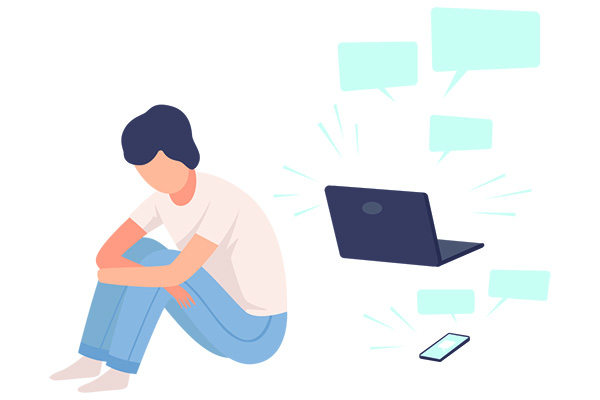
A modern day phenomenon
The physical and emotional effects of loneliness are now well documented, particularly amongst older generations.
BUT more and more employees are also reporting a sense of loneliness at work, despite being surrounded by colleagues all day.
According to new research by Mind and totaljobs, more than half (60%) of UK employees have felt lonely at work.
You may ask why this would be the case, given that traditional definitions of loneliness describe it as a state of solitude or being alone. But modern thinking describes loneliness as a ‘state of mind’ – causing people to feel empty, alone, and unwanted.
The impact to the employee’s health on business performance is significant. Nearly two-thirds of employees feeling their workplace doesn’t do enough to combat office loneliness, while research suggests loneliness is costing as much as five working days of productivity loss per affected employee.
The purpose of this month’s article is to explore the impact and offer some simple solutions.
What causes loneliness
Traditional research reports that lower levels of loneliness are found amongst those who are married, earn higher incomes, and have achieved higher educational status. Conversely, higher levels of loneliness are associated with those living alone, with small social networks, and low-quality social relationships.
Other contributing factors include major life changes, including moving to a new location, taking a new job, divorce, and a bereavement. Additionally, it can be a symptom of a psychological disorder such as depression, or those with low self-esteem.
When considering the factors that then compound this at work:
• Technology is undoubtedly a huge factor. We send emails or instant messages rather than talking to people.
• Hot desking/part-time/flexi working is making it harder to form close relationships. When sat in the same place every day, people notice who is off sick, or who has a birthday. We don’t have ‘work families’ anymore.
• Workplace pressure means that the social pub drink is happening less and less, as people work longer hours and then rush from work to spend what little time they have left of the day with their loved ones.
• Home working is also contributing to this isolation, with some workers not seeing colleagues for weeks on end.
When taking the above into consideration, it is hardly surprising that the millennial generation, for whom technology accounts for an increasing percentage of their social interaction, are reporting the highest levels of workplace anxiety/loneliness.
The effects of loneliness on health
Being lonely is not good for you – fact. Here’s what happens: when we feel isolated and alone, our bodies enter into a heightened state of stress, shortening our breath, tensing our muscles and accelerating our heart rate. If prolonged, it increases the risk of heart disease by 29% and the risk of stroke by 32%, reducing overall life expectancy by seven years.
Some researchers estimate that chronic loneliness is the health equivalent of smoking 15 cigarettes per day.
Loneliness at work can manifest in antisocial behaviour and poor decision making because loneliness actually alters the brain function causing decreased memory and learning capability. In addition, lonely adults consume more alcohol and get less exercise than those who are not lonely. Their diet is higher in fat, their sleep is less efficient, and they report more daytime fatigue.
How employers can help
1. Make managing loneliness a wellbeing priority
To do this managers need to be trained and developed to provide appropriate support. This can be as simple as making note when an employee goes through a big life change such as starting a family, children flying the nest, a relationship break-up, bereavement or even a workplace promotion (we often see the saying ‘it’s lonely at the top’) – and offering support.
2. Encourage people to talk
Avoid making assumptions, or trying to guess what problem a co-worker has, because even the most sociable people feel lonely. Staying silent is one of the worst things people in difficulty can do. Opening up to a colleague about how they’re feeling can help them feel more relaxed about chatting to a manager.
3. Create opportunities for social interaction
Most people spend more time with their colleagues at work than they do with their families. Employers therefore have lots of opportunities to create occasions for social interaction. Such opportunities – which could be as simple as creating shared breakout areas and encouraging people to eat lunch together instead of in isolation at their desks – can provide huge emotional benefits.
4.Try to preserve social structures
Many of the social structures that were once in place at work have gone. If workers now work at home, bring them together regularly through team meetings or social events. Similarly, technology has over-ridden the need for field-based workers to meet at a depot/office before starting their day. Think how these individuals can be brought together socially, or for sharing best practice at work.
Contact us: ViiSana specialises in implementing wellbeing programmes through the implementation of company-wide Vitality Life and Health insurance. If you would like to discuss your company’s individual health concerns/challenges, or if you would just like to discuss ideas for implementing a programme at your business, please get in touch email: paul.ollerton@viisana.com
Phone: 0333 772 0761
Twitter/Instagram/Facebook/





